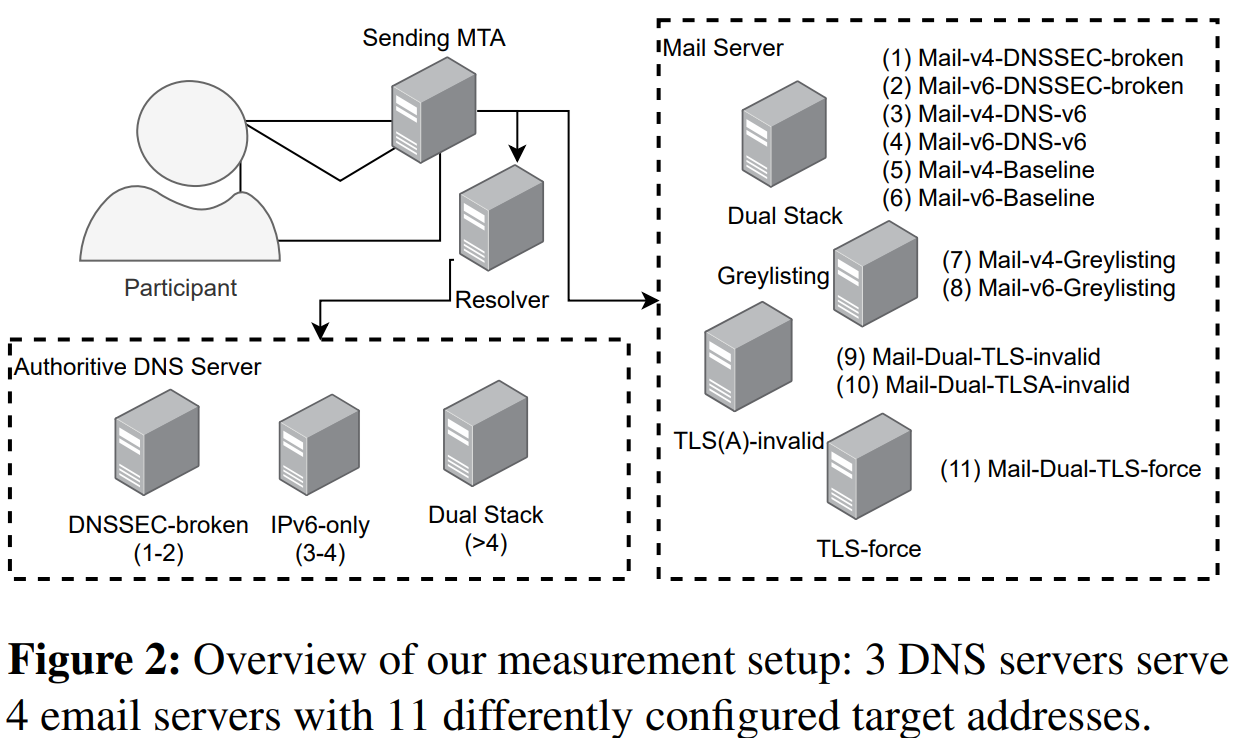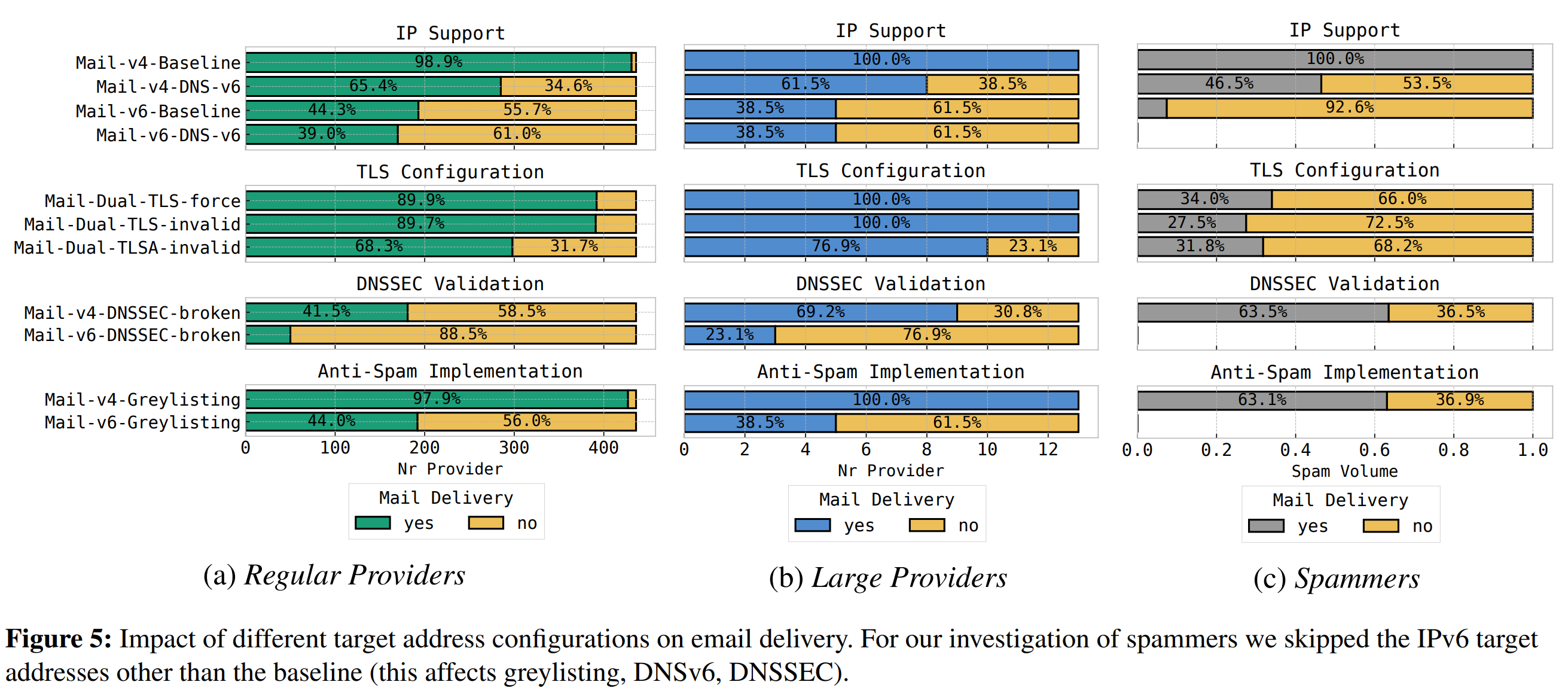I haven’t been posting new reading group paper summaries lately, but I intend to fix that gap and resume writing these. Our 123rd paper was about email: “Not that Simple: Email Delivery in the 21st Century” by Florian Holzbauer, Johanna Ullrich, Martina Lindorfer, and Tobias Fiebig. This paper studies whether different emerging standards and technologies impact email delivery from one Mail Transfer Agent (MTA) to another.
It turns out that with a slew of new and changing standards and technologies, email delivery is not that easy. If we simplify things a bit, the sender MTA first needs to figure out where to send the email using DNS. Then it communicates with the receiving MTA to actually deliver the message. Things can go wrong at both of these steps due to the usage of different communication standards (IPv4 vs. IPv6) or adherence to stricter security. On the security side, the authors tried to force TLS to ensure an encrypted connection and present an invalid TLS certificate to study how vulnerable the email exchange may be to several types of attacks, such as man-in-the-middle. They also tried to use misconfigured DNSSEC to see if that prevented email delivery.
To quantify the email delivery, the authors set up their email testbed, consisting of differently configured Authoritative DNS servers and MTA, giving a total of 11 combinations that try different connectivity and security options. This testbed served as the receiver. For senders, the authors used email providers, categorized into two groups: large and regular. Large providers are companies like Google and Microsoft that provide email services for a variety of other organizations and individuals. Regular providers are smaller and serve one or a few institutions.
Of the big findings, IPv6 is still a problem. Roughly 40% of email providers (regular and large) cannot deliver mail to systems with IPv6-only DNS. About 60% of providers cannot deliver mail when both MTA and DNS only rely on IPv6.
Another important lesson is that email providers, large and regular, prioritize email delivery over security. While most providers (90% of regular and all large) can deliver emails with forced TLS, the providers do not care/check the validity of the TLS. Misconfigured DNSSEC also does not seem to stop most providers from delivering mail.
Discussion
1) Missing parts. The paper studies email delivery, but it looks at the problem very literally — whether email arrives at the receiving MTA. This does not necessarily correspond with the user experience. For example, the complexity of dealing with spam is not studied here, but it is a large part of users’ experience with email. The receiver may apply spam filters after receiving the email, which can cause the email to be never shown to the user.
2) Graylisting. The paper does some study on spam emails, again in the context of its delivery to the receiving MTAs and the technology used. One spam-specific technology the paper tested is graylisting. This is a trivial method to reduce spam by rejecting emails from unknown sources on the first attempt. If the sender retries the email delivery sometime later, then the receiver will accept it. It appears that this simple technique resulted in fewer spam emails. However, we wonder if using it even makes sense — 60% of spam still made it through, and using state-of-the-art spam filters may end up catching more spam regardless of whether it made it through the graylisting procedure.
3) Misleading results. The results shown in the paper express the ratio of different providers that may be impacted by a particular issue/configuration. This is a somewhat misleading metric, and it would be much nicer to know how many users may be impacted instead. Of course, for all the fairness to the paper, this information is rather hard to know since email providers are not likely to share their user data.
4) IPv6. The results on issues with IPv6 may not be specific to email, as IPv6 adoption, in general, may not be so great just yet.

